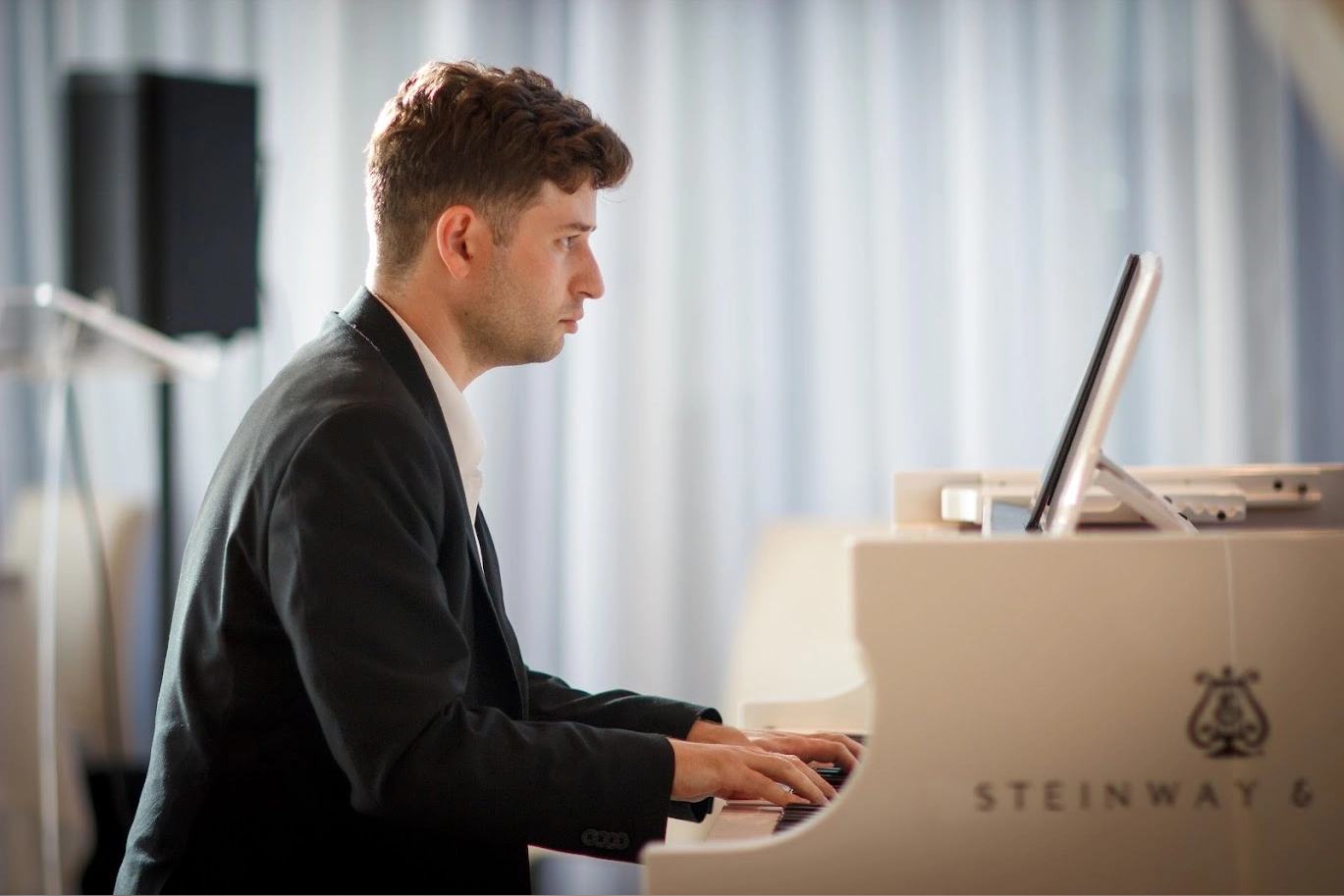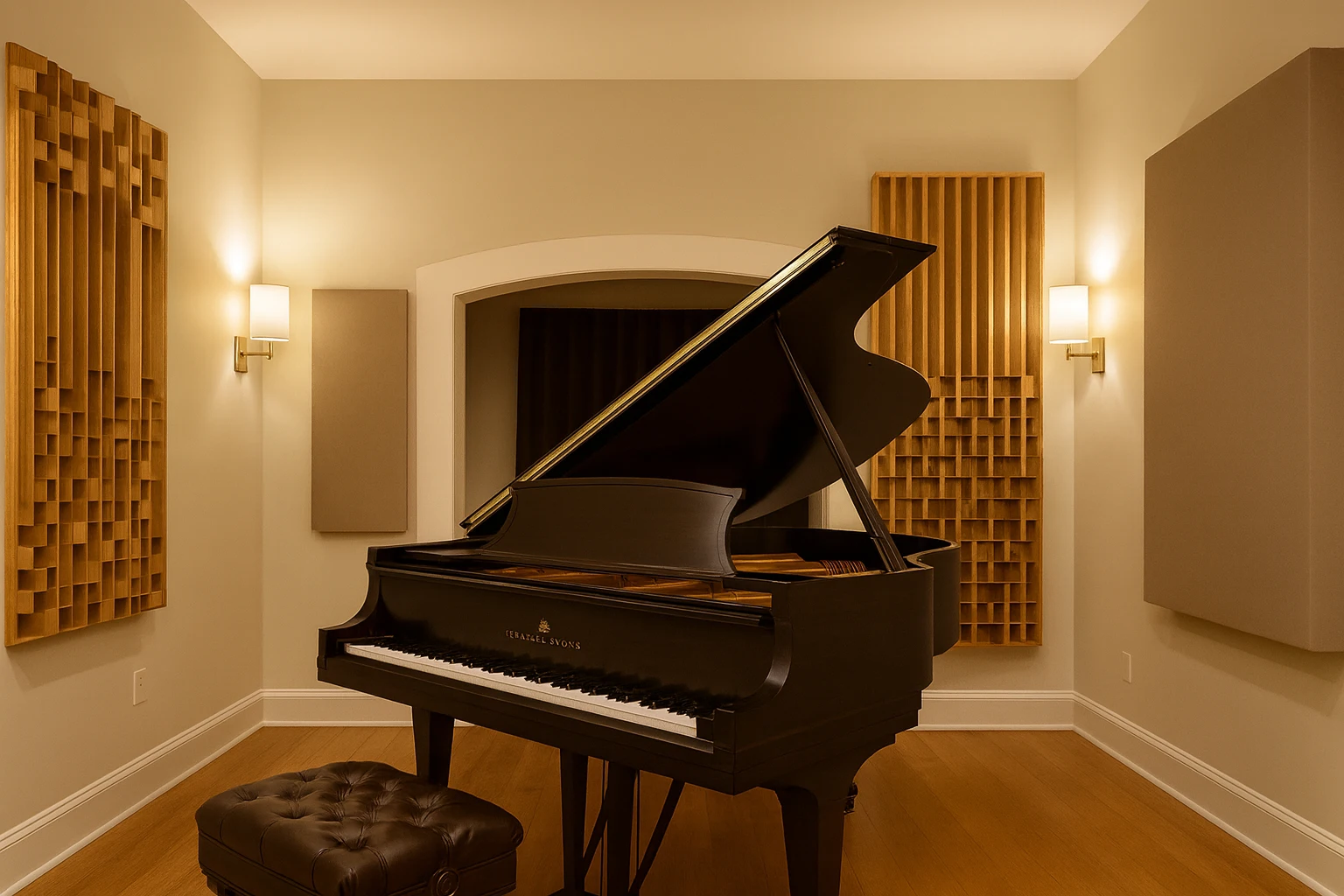When it comes to guitar playing, you’ve got speed. You’ve got precision. And then you’ve got… blues, which is not about how many notes you can cram into a measure, but how much soul you can squeeze out of just one.
Blues guitar lessons don’t just teach you what to play. They teach you how to mean it. They’re about more than the 12-bar form or pentatonic licks.
They’re about bending a note and making it cry, about holding back when your instinct says to shred, and about putting your story into sound, even if it’s one slow, singing phrase.
And in a city like Los Angeles, where music pulses through every street corner, learning blues guitar is more than just picking up a genre. It’s about learning to connect with your instrument, your audience, and yourself.
Whether you’re a beginner trying to make your first solo sound like something or a seasoned player looking to dig deeper, let’s explore how to truly learn the emotional side of the blues.
What Makes Blues Guitar So Powerful?
Unlike other styles that may prize speed or precision, blues guitar is all about feel. That doesn’t mean you ignore technique. It just means the goal is different: you’re not trying to impress; you’re trying to express.
Blues is raw. It’s honest. It’s human.
It has always been a storytelling tradition. Players like B.B. King, Bonnie Raitt, and Stevie Ray Vaughan didn’t just play the guitar, but spoke through it.
They made every bend feel like a confession. When you listen to them, you realize blues isn’t about showing off. It’s about showing up with your truth. And that’s what makes it timeless.
Think about a single note held just long enough, with a slight vibrato at the end. That tiny motion can say more than 16 bars of fast playing ever could. When you learn blues guitar, you start to realize how much space, silence, and tension (in the right amounts or with the felt emotion) can do.
This is why bluess guitar lessons are a game-changer. They teach you how to speak through your strings. And in a city like LA, where everyone’s telling a story, the ability to say something real with your instrument sets you apart.
Bends, Slides, and Vibrato: The ABC’s of Emotion
When most people think of blues, they think of the sound: those gritty, moody notes dripping with soul. But what’s really happening under the hood?
A lot of it comes down to a few essential techniques:
- Bends – The blues live in the in-between. When you bend a note, you’re literally changing its pitch in real time, like a voice cracking with emotion.
- Vibrato – This gives your notes a human-like tremble, adding intensity and vulnerability.
- Slides – Moving smoothly between notes mirrors the natural flow of spoken phrases.
Think of how B.B. King would let a note ring out, or how Clapton played like he was pulling lyrics out of the strings. Bonnie Raitt's slide playing? That’s emotion in motion. These aren’t just techniques. They are voices!
In your lessons, you’ll learn to shape every note with intention. And the wild part? Even a basic blues lick, when played with good tone and feel, can hit harder than the flashiest solo.
At Angeles Academy of Music, students are often surprised by how early they’re encouraged to start exploring these techniques. Because the goal isn’t just accuracy, it’s artistry.

Why Blues Is One of the Best Styles for Beginners
One of the most common questions we get from students is:
Is blues guitar hard to learn?
Not at all. In fact, blues is one of the most approachable styles for beginners. The chord progressions are familiar, the scales are easy to memorize, and you can start jamming almost right away. The 12-bar blues pattern becomes your best friend early on.
But don’t mistake simplicity for shallowness. Blues music guitar lessons can be a deep well. It gives you quick wins and years of growth. Once you’re confident with your rhythm, your ear, and your phrasing, you’ll see how far the blues can really take you.
A great way to get started is by learning real songs, not just exercises. Doing a blues song guitar lesson based on classics like “Sweet Home Chicago” (Robert Johnson), “The Thrill Is Gone” (B.B. King), or “Pride and Joy” (Stevie Ray Vaughan) helps you connect the dots between theory and feel.
Side note: If you’re looking for inspiration, please feel free to read our article on what guitar students can learn from the best guitar players of all time.
Electric or Acoustic? What’s the Best Guitar for Learning Blues?
Another big question:
What’s the best guitar to learn blues on?
There’s no one-size-fits-all. A lot of classic blues players swore by the Fender Stratocaster for its smooth neck, clear tone, and flexibility. It’s legendary for a reason. Others, like B.B. King, leaned toward semi-hollow Gibsons for that thick, warm, buttery tone.
Here’s the real answer: whatever you have that plays well and stays in tune is the best place to start. If you’re doing acoustic blues guitar lessons, your guitar may have more snap and percussive tone. With electric guitar lessons, especially in the blues context, you can shape your sound with amp settings, overdrive, and touch.
At Angeles Academy, students try both and get a feel for what suits their voice. Some gravitate toward fingerstyle on an acoustic. Others fall in love with that smooth, sustained electric tone.
Secondary Styles That Complement Blues
What makes blues so versatile is how it feeds into other styles. If you're doing jazz guitar lessons in Los Angeles, you'll notice blues progressions show up all over jazz standards. Jazz uses blues phrasing with more harmonic complexity, but the emotional core stays the same.
And if you’re working through fingerstyle guitar lessons, you’ll discover how blues patterns form the backbone of countless folk, country, and Americana tunes. From Delta-style open tunings to ragtime runs, blues is a gateway to multiple genres.
These cross-genre connections make blues guitar lessons one of the most valuable starting points in any guitarist’s education.
How to Practice Blues Guitar the Right Way
Learning blues guitar isn’t just about what you practice, but about how you practice.
Here are a few pro tips:
- Listen more than you play. Really. Sit with a B.B. King or Bonnie Raitt record and feel what the guitar is saying. Then try to copy the phrasing.
- Focus on tone. It’s not about gear. It’s about how your hands touch the strings, how your pick moves, and how you control volume. Learning basic audio tools like equalizer, compressor, distortion, reverb, flanger, phaser, etc., and the engineering behind them can give you a new way to express yourself with the tone of your amp.
- Use call-and-response. Play a phrase, then answer it. This teaches you to think like a singer, not just a technician.
- Start slow. Speed comes later. Right now, it’s about nailing timing and expression.
In your lessons at Angeles Academy, you’ll get guided exercises that help build these habits early. It’s a balance of freedom and structure, technique with taste.

What About Famous Artists? Did They Take Lessons?
Fun fact:
Did Tom Petty take guitar lessons?
Yep, he sure did. He actually studied under Don Felder (of the Eagles) when he was still a teenager in Florida. That foundation gave him the confidence to start writing songs and leading bands early on.
So if you’ve ever wondered if lessons are “worth it” for a creative player, know that even the pros started somewhere. Petty didn’t become a legend by winging it. He put in the time, just like you will.
Most Commonly Asked Questions from Blues Guitar Students
What is blues in guitar?
Blues is a blend of musical structure and emotional storytelling. On guitar, it usually means working with pentatonic and blues scales, 12-bar progressions, and phrasing that mimics the human voice.
Can I find blues guitar lessons near me in LA?
Absolutely. Angeles Academy offers in-person blues lessons tailored to your skill level and goals. And if you’re not nearby, you can also find blues guitar lessons online that deliver the same personal feel, just virtually.
Is blues only for electric players?
Not at all. Acoustic blues guitar lessons are a whole vibe. Think Delta blues, slide guitar, and fingerstyle grooves. If you want to hear your fingers tell a story, this is it.
What age should I start blues guitar?
Any age. Kids, teens, adults, and even seniors find something freeing about the blues. It’s never too early. Or too late... to start learning how to express yourself musically.
Can I start learning blues guitar if I have zero music background?
Yes, and no one’s expecting you to know theory or read music on day one. Blues is beginner-friendly because it leans more on feel than complexity. But be ready to put in real work.
You’ll start with things like the 12-bar blues and the pentatonic scale (as discussed above), which are accessible, but getting your fingers to cooperate, staying on rhythm, and training your ear takes patience.
If you're consistent and curious, you'll be playing real blues within a few months. If you’re a beginner, our article on easy songs to play on the guitar might help.
Is blues music theory hard to learn?
It’s not “hard,” but it’s different from academic theory. Blues uses a small set of tools: mainly the I-IV-V progression and the blues scale, but leans heavily on phrasing, syncopation, and timing.
So while the theory isn’t deep on paper, applying it musically takes repetition. You’ll start to understand it best by playing it, not memorizing rules. Once your hands start doing the talking, the theory starts to make sense.
Is Blues guitar hard to play?
Blues guitar is easy to start, but deep to master. You’ll likely learn your first riff within a week. But making it feel authentic, through bends, phrasing, tone, and timing, takes time. That’s the beauty of it: simple tools, infinite depth.
Final Advice: Make Your Amp Your Best Friend
Think of your amp like your guitar’s voice box. How you dial it in can totally change the story your guitar tells. Blues tone lives in the sweet spot between clean and gritty.
Want that buttery blues tone? Start with EQ: roll back the treble a touch, bump the mids, and keep the bass tight, not boomy. Add light compression to even out dynamics so your soft notes still sing.
A flanger or phaser, used subtly, can add swirl and motion. Think vintage Hendrix or Stevie Ray on a rainy night.
A little overdrive gives your bends some growl, while a touch of reverb adds space and soul. Tube amps like a Fender Blues Junior or a clean-channel Marshall give you warmth and dynamic response - perfect for expressive playing.
Don’t overdo it, though. Blues is about feel, not effects. Learn how your amp responds to pick attack, volume knob tweaks, and even where you stand.
The right amp tone makes your bends cry, your chords breathe, and your solos speak in full sentences.
With blues, your amp isn’t just gear. It’s personality.
Conclusion
When you study blues, you're not just learning a style, you’re stepping into a lineage. You're borrowing the torch from players who turned struggle into sound, and you’re adding your own story to it.
If you’re serious about finding your voice on guitar, and not just learning a bunch of licks, Angeles Academy of Music is the spot.
We’ve been teaching guitar lessons for beginners, pros, and everyone in between here in Los Angeles for years. Whether you’re into electric, acoustic, or fingerstyle, our instructors will guide you through the technical and emotional sides of the blues.
We keep it real. We keep it musical. And we’ll show you how to bring your full self to every note you play.
So yeah, blues guitar lessons can teach you chords, licks, and scales. But what they really teach you… It is to feel.
.svg)
.svg)
.svg)
.svg)
.svg)
.svg)





.svg)